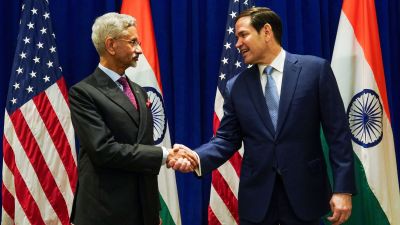Moleculinary
Science enters the kitchen to cook up a molecular gastronomy spread

IMAGINE! BETTER STILL, try out snail porridge as starter, duck breast with olive oil chocolate bonbon as main course and smoked bacon and egg ice- cream for dessert. These are not what they have for dinner in Star Trek or inside the Nautilus. These are fine ex-amples of a mode of preparing food that is grandly termed molecular gastronomy.
A sensation sweeping the culinary world, molecular gastronomy applies the principles of physics and chemistry to cooking — the starting point being the notion that certain types of food have molecular linkages between them. Combine them and you get a sardine-on-toast sorbet. Of course, apart from the usual kitchen-ware, you would require centrifuges, liquid nitrogen, microscopes and even lasers for ‘molecular’ cooking.
Naturally, the concept was not de-veloped by cooks but by French sci-entist Herve This and a professor of physics at Oxford, Nicholas Kurti, in the 1980s. They ran perhaps the only scientific laboratory in the world that could alternate as kitchen. The duo made a detailed study of cooking procedures through ages and stum-bled on age-old questions: should jam be cooked on a copper plate? What’s a per-fectly poached egg? Exactly at what point does sugar turn black and bitter?
This cross over between science and cooking waslappedupbythe mostoutstandingrestau-rants of the world to sweep unsuspecting cus-tomers off their feet. Heston Blumenthal, chef at the Fat Duck restaurant at Bray-on-Thames in Britain, as early as in 1999 made a combina-tion dish of caviar and chocolate. With that ‘molecular cuisine’ became commercially available for the first time. Fat Duck then went on to make spice bread ice-creamandcrabsyrup, oysters andpas-sion fruit jelly andfinally its mostpop-ularbaconandeggice- cream.
Like Blumenthal, Barcelona-born chef Ferran Adria’s food is considered part of the molecular gastronomy movement. His restaurant El Bulli, on a stretch of coastline north of Barcelona, has been voted number one in the World’s 50 Best Restaurants 2006 awards. It’s open just six months a year and there’s no table through 2006. Last year, its menu included sea urchin ravioli and wasabi icecream.
Indian culinary experts are studying this trend closely. Celebrated chef Sanjeev Kapoor says whenever anyone is cook-ing anything, science and art meet. “Blumen-thal took the science aspect to a different level, so much so that it became very technical. You can’t go to the market and buy a melon after measuring its sweetness with a refractometre.” Kapoor feels that Indian cuisine already has afair share of dishes that fools around with the conventional. “As a child I liked barfi with ketchup. Consider ande ka halwa or meat pickle—they have been part of our lives for ages.” Although he feels people world over are not really adventurous when it comes to food, he is all too willing to insert savoury into sweet (rather than the other way round) and create a gulab jamun stuffed with chilli amla pickle.
Gautam Anand, a vice-president with ITC Maurya Sheraton in New Delhi, says every restaurant worth its salt has a micro-biological lab to work and advise on food combinations. “So molecular gastronomy is really not news for us. Indian culinary experts have been prac-ticing the art of combining food, or trophology, for years,” he says, adding that in India there is no market yet for Blumenthal-like creations.
The yin and yang of food, or the acid-alkali balance, has been observed in kitchens for ages. What needs to be seen is whether you would want your cook to turn the fish into foam or the milk into chips. Remember, Blu-menthal is watching!
KITCHENWARE FOR FUTURISTIC COOKING
LIQUID NITROGEN With a boiling, yes boiling, point at minus 196 degrees Celsius, this is great for making ice cream in a jiffy. Has been used to make tobacco-flavoured ice cream.
SPECTROMETER NMR MACHINE Often used by synthetic chemists and phy-sicists, the infrared spectrometer nuclear magnetic resonance machine is showing up these days in some avant-garde restaurant kitchens.
WATER PURIFICATION SYSTEM Fat Duck chef Blumenthal uses the water purifica-tion system to generate de-ionized water to keep the colour and texture on his green vegetables.
Photos


- 01
- 02
- 03
- 04
- 05





























